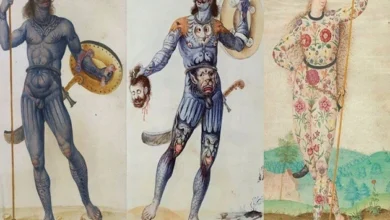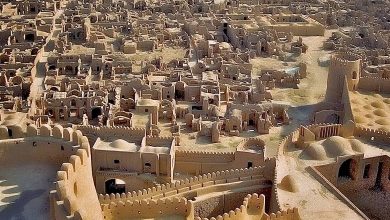How people lived in the golden age of Rome

The Golden Age of Rome fell on four centuries – from the second century BC to the second century AD. During this period, the republic was replaced by an empire ruled by such great people as Caesar and Octavian, and its wealth, fame, and power caused awe in other states that were not part of this power.
When people talk about Rome, they usually talk about its conquests, political intrigues, and the like. But how did ordinary people live in the golden age of Rome? Let’s take a closer look at this point.
Rome was overpopulated
Rome was very large. Researchers believe that its population was hundreds of thousands of people in the first century BC. During the reign of Augustus Octavian, in the final of the 1st century BC, it could already reach 800 thousand people, and one million – in the 2nd century AD.
For you to understand the scale, the entire population of the Earth in the first year of our era, according to various estimates, ranged from 150 to 300 million people. In the ratio of the number of inhabitants of the planet and Rome at that time.
People lived on a minimal piece of land, and Rome was a cauldron of free citizens, freedmen, and slaves. Many were forced to live in insulae – four or five-story blocks of flats that were rented out. And, unlike today, the upper flats were not penthouse apartments, but housing for the poor, while the wealthy were on the ground floors.
People lived in cramped quarters, and the houses themselves were built in haste from fragile and combustible materials. The area of the apartments was very small and usually did not exceed twenty square meters. At the same time, in the built-up upper floors, the area of the premises decreased.
It was noisy and traffic jams in Rome
One of the main advantages of the Roman Republic and the Empire is the quality and quantity of roads it built. They connected the whole country, and one could easily get from one city to another. The roads were paved and drained to prevent flooding during heavy rains in Rome itself.
But the developed infrastructure also had negative aspects. Many people sought to get to Rome and made their way in chariots or other wheeled vehicles, which created a lot of noise and real traffic jams, especially in the city center. The problem was so serious that Julius Caesar, in the first century BC, declared it illegal to enter the central regions of Rome by wheeled transport during the daytime.
This had an effect, but at night, using their legal right, the citizens of Rome cut across the capital, creating so much noise that people in insulae and Domus, located next to busy roads, could not sleep.
If you were a citizen of Rome at the time, you would have seen many modern things. For example, you might have witnessed a peculiar traffic accident where two carriage drivers were having a verbal or a fistfight, trying to sort out who was not giving way to whom.
Wealthy people lived close to the imperial court
If in the Middle Ages, the New Age, and even in modern times, people (it does not matter whether they are rich or poor) tried to relocate as far as possible from the “sun,” then in Rome, wealthy citizens settled as close to the emperor.
They lived in so-called Domus – mansions for one family. Domus consisted of one or two floors with numerous bedrooms, dining rooms, living rooms, kitchen, bathroom, and reception halls. The specificity of the Domus of Rome was their smaller area, compared to the mansions of wealthy citizens in other cities, due to the limited amount of free land.
City baths were commonplace
In the golden age of Rome, everyone – from slaves to emperors – attended the city baths. According to historians, in 33 BC in Rome alone, there were about 170 public baths, and by 400 AD, their number had increased to about 900. Moreover, these were not those small baths in the classical sense, but whole bath complexes capable of serving dozens of people at the same time.
In the first century BC, baths already included several departments, such as hot and cold rooms with pools, steam rooms, and dry heated rooms for washing. Baths were used not only for hygiene but also as a meeting place for business transactions, intrigue, and, of course, communication.
Most wealthy Romans had slaves or servants to wash their masters, while the poor did the watering themselves.
Public toilets and running water were all over the place
While in our country, until now, many schools in the regions do not have a warm toilet, and wells or columns are often used as a water supply system, water from which must be pumped by hand, in Rome, thanks to a developed network of aqueducts and sewerage systems, it was possible to enjoy the benefits civilization right in your home.
The Greek geographer Strabo, who lived in the 1st century AD, wrote that the Romans considered building infrastructure, especially taking care of roads, water supply, and sewerage. He wrote that real rivers flow through the developed networks of the city’s sewerage, which merge into the Tiber, and almost every house has water pipes, cisterns for storing water, and fountains.
By the 3rd century BC, the main sewer, the Cloaca Maxima, had evolved from an open canal to a closed tunnel and ran outside the city, solving the odor issue.
But alas, the water supply and toilet in the house were accessible only to the first floors, while the rest had to carry water and visit public toilets. There were many holes in them, going in a row, and the Romans, sitting on the “pot,” communicated with each other because there were no partitions. Since there was no toilet paper (and any other) then, the Romans used tree leaves or common sponges, similar to cleaning brushes, for hygiene.
Laundry was a challenge
Most Roman citizens did not wash their clothes and gave them to fullos, laundresses. They had the difficult task of cleaning linen or woolen clothing, removing the dirt and sweat without using soap.
For this, urine, often human, was best suited, taken from chamber pots that stood throughout the capital. Animal urine was also often used. This method was chosen because urine contains ammonia, which was the most readily available cleaning agent at the time.
The clothes were placed in a tub with a mixture of water and urine, after which they trampled on it, then washed in clean water, wrung out, and dried. By the end of the first century AD, urine had become such a valuable resource due to the ever-growing population that Emperor Vespasian imposed a tax on urine collected from public places.
By the way, the catchphrase “money doesn’t smell” arose precisely after the introduction of this tax, when Emperor Vespasian, in response to the disapproving remark of his son Titus about the new collection, took a coin from the first profit, brought it to his nose and asked if it stinks of urine. When Titus answered “no,” Vespasian said: “But this is money from the urine.”
People had a variety of activities to suit all tastes
Yes, compared to modern times, there are not so many of them, but Rome was a real Las Vegas for antiquity. One could go to the theater for gladiator fights, the circus, one of the many theaters for musical performances or stage performances, visit horse races, and much more.
All this was done not to take care of the citizens but to win the loyalty of the masses. Each new emperor tried to contribute to the entertainment of the Romans so that they idolized him even more.
Every citizen was guaranteed grain at a low price
Rome grew up; with it, the population and poverty grew, so famine broke out more and more often. Around the first century BC, free distribution of grain became the norm, which hit the economy of Rome but saved many people from starvation.
Under Gaius Julius Caesar, grain was given out even to not Roman citizens. During the reign of Augustus Octavian, when the crisis associated with internal conflicts and delays in the supply of grain from Egypt passed, all citizens also had the right to receive grain, but for a small fee.
Total patriarchy was the norm
The man was in charge of the family. And he was responsible for everything – in the literal sense of the word. He controlled every aspect of his children’s lives, selected husbands for his daughters, and could even sell them into slavery or kill them. Of course, the punishment was due for such crimes, but such acts were not so rare in public life. The burden of caring for the family was placed on the man, and most often, only he worked.
As for women, they, despite the patriarchy of society, were freer in some things than medieval girls. They could own property, work outside the home, and even start their own business. Wealthy women spent most of their time in leisure and caring for their children, as well as disposing of servants and slaves.




